Have a plan before you start
As first seen in the Orchardist, May 2018
Sandy Scarrow, Horticultural Consultant Fruition Horticulture (BOP) Ltd, Tauranga
Having had 30 years plus in the kiwifruit industry I can assure you that the years spin around faster and faster. It seems only a few months ago that I was on client’s orchards reviewing the winter pruning job that had been done for the season. By the time this article is in print, most of the kiwifruit crop will be tucked into coolstore awaiting shipment to markets far away. It is time to winter prune again!!
In this article I review some of the science on how kiwifruit vines respond to the winter pruning, consider the season and the impact this may have on the job you have to get done and also touch on the task from an organic perspective. 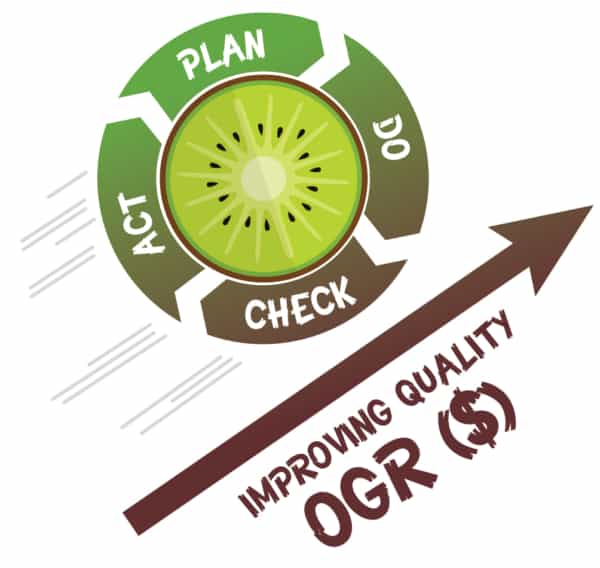
While it is easy to consider the winter pruning job as the start of the new season in a lineal stop:start fashion. I find it more useful to consider canopy management as a circular process. What you did last winter and over the summer will impact on what you need to do and the choices you have this winter and so on. This is even more true for those of you who are organic growers who have fewer tools to use to manage the number of flowers they get from each winter bud that is tied down.
The notion of the quality wheel comes to mind. Think of orchard gate return as ever improving quality. I am assuming that, as a grower or manager, you are constantly striving for increased orchard gate return by either driving up yield or improving fruit quality. This quality wheel is represented in Figure 1.
Figure 1 Quality Wheel in Relation to Winter Pruning
The start to improving the winter pruning job is to plan. A good plan requires reviewing all the data available to you and determining, based on that review of the data, what you are going to do to achieve the specific targets you set for various parts of your orchard.
Think about the end result that you want in terms of trays, fruit size and fruit dry matter and then consider all the possible inputs and what you can influence. At winter pruning time there are two main things you can influence, winter bud numbers and winter bud quality. Winter bud numbers are simply about the number of buds tied down whereas quality is a matter of previous seasons management, cane/spur selection and how these are tied down.
I will discuss these three aspects with some examples.
I have noticed this summer, though warm, has had relatively low sunshine hours. The data shows that in Tauranga the solar radiation levels for December 2017 and January and February 2018 were around 66 Mega Joules per metre squared (MJ/m2) average daily total. This is only slightly above the solar radiation we experienced in the summer of 2015/2106 and 2011/2012. The science tells us that (winter chilling, bud burst enhancers and cane tipping aside) the higher the amount of sun that replacement cane is exposed to, the higher the number of flowers that will come from each winter bud. This is impacted by actual sunshine and also the state of summer canopy management. Look at the data for your region, review what you experienced in a year where your region received similar radiation. Do you have to change any thing as a result of this information? If your flower to winter bud ratio was low in the years of previously low solar radiation, you may want to consider tying in slightly more wood.
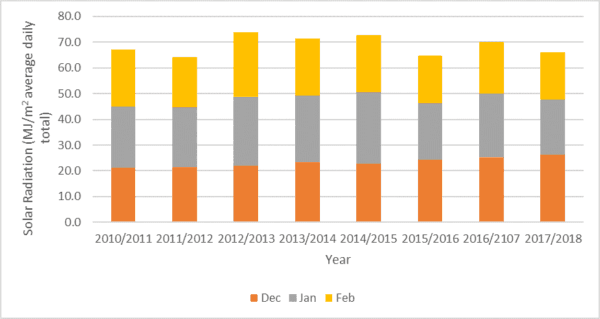
Figure 2 Solar Radiation for Tauranga over Previous Summers
In the Bay of Plenty at least, this summer was one of two halves. December, early January was hot and dry and then the rest of summer was hot and wet!! It was difficult to keep on top of canopy management. I have seen some great work with focus on frequent runs through the canopy removing unwanted vegetative growth. I have also seen some very poor work. Lack of timely interventions has resulted in vigorous canopies of growth that is not needed, growth that will be shading the cane you want to tie down this winter. The science again tells us that more flowers are produced on cane that has been well exposed to sunlight. If you have lost control of your canopy over the season, it may pay to tie down more wood this winter to try and lift flower numbers.
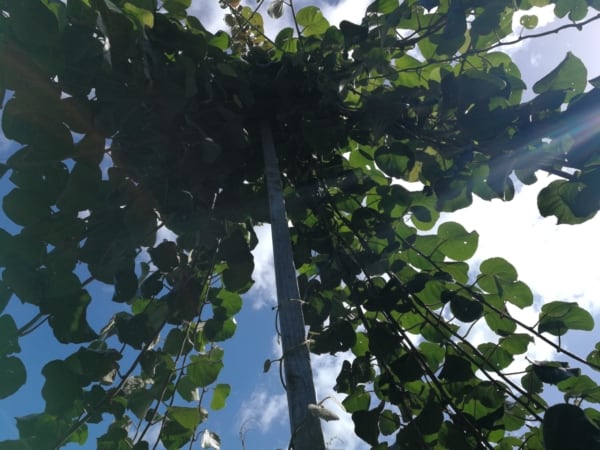
The low solar radiation and poor canopy management will compound poor flower levels. Be wary though not to take things too far with tying in wood to compensate.
Stringing of replacement canopies is a strategy used on some cultivars to simplify canopy management. If you have areas of canopy that were strung and unstrung in the previous season, see how well these areas have performed in terms of fruit numbers. Even with the fruit harvested, you can count fruiting stalks per winter bud tied down. Again, the science tells us that canes growing at an angle over the fruiting canopy do not produce as many flowers as those that are allowed to fall naturally over the fruiting canopy. Collect your own data on this. Stringing your canopy may still result in you having the flower numbers you require and simplifies your growing system.
Figure 3 Strung Canes Growing at a Steep Angle
Figure 3 shows a photo of a strung canopy that is growing at a relatively steep angle. If you want to continue stringing but are unhappy with the number of flowers produced on the strung cane, you could consider lowering the height on the pole and therefore reducing the angle of the cane. This should improve the flower to winter bud ratio.
Wood selection is also important. The flower starts to develop, termed ‘floral evocation’, relatively early in the growing season. It is likely that wood that was produced early in the season, and has been relatively well exposed to light, will be the most floral therefore fruitful wood. A great indicator of wood that was produced early in the season is wood that has fruiting stalks on it.
Because of the vigour of some cultivars, the new fruiting canes produced in spring, are likely to grow sufficiently to fill the area required. Hayward is not so vigorous. With Hayward vines, to fill the canopy completely, it is necessary to grab that fruited cane from wherever possible to fill the canopy area. While it looks untidy, a perfectly pruned Hayward vine will have many ages of wood, at various positions throughout the canopy in order to get an even spread of the one year old buds required. Don’t be put off by the mess. Be more concerned about a tidy canopy that relies completely on replacement canes growing from the leader. It is here that a “quick and dirty” job has been done without thought to the quality and the position of the winter buds that will produce the flowers and hence fruit for the following season.
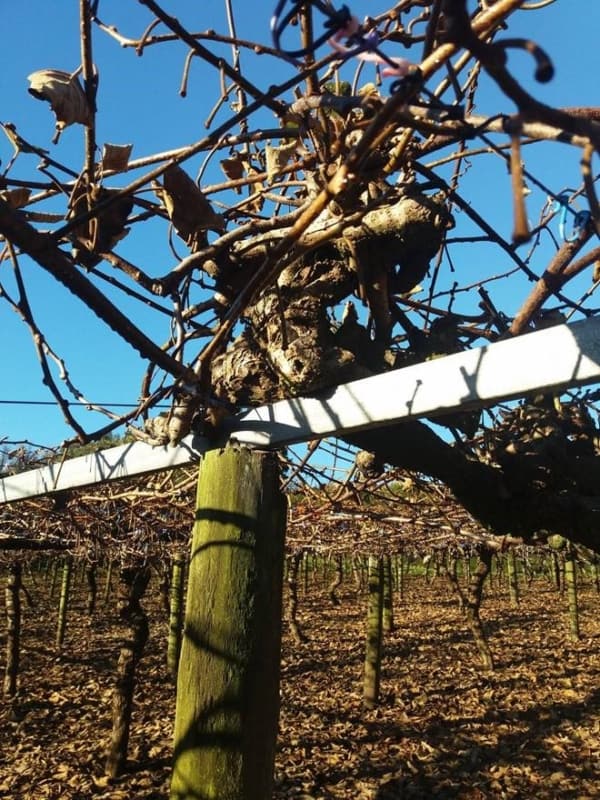
The plan also needs to include what you want the pruners to focus on. Doing what you can to remove heavy wood around the leader, for example, needs to be an on-going target. Aim to remove at least one or two of these units per bay per season.
Referring back to the quality wheel, once you have set your plan either you or your team will implement the plan. That is, prune and tie down your vines so that you have the target number of canes or buds, of the quality you want, in the location you want.
To ensure that you and your team are clear about your expectations, it is good to provide the plan you have as a written document. Zespri have examples of the type of pruning specifications you might agree with your team. To avoid confusion be very clear on your specifications and don’t be afraid to use pictures if they are going to convey more meaning.
The next step in this quality wheel that is often overlooked is to check. That is, check what is happening as the work is being done. One grower once told me that he ensures that counts are made of every vine to ensure that the numbers are being achieved. This is a very high level of monitoring. A system instituted over the past few years has proved very useful as an indicator for the orchard owner, the manager and the pruning team of the quality of the work that is being done. The system is simply to count buds behind the pruners and then note the numbers on coloured ribbon. We use the ribbon colours as follows:
Figure 4 Heavy Gnarly Wood on the Leader
Red = there are too few buds/canes tied down.
Green = the target number of buds/canes, within a reasonable (+ or – 20%) range have been tied down.
Orange = there are too many buds/canes tied down.
This gives a good visual guide to the pruners that helps them get closer to the target. As well as the total number, we also record the location of the winter buds across the bay. The target is for an even spread of quality buds throughout the canopy. Recording counts by zone (typically between wires) helps gather this information.
Check also that the tying down has been done well. Canes need to be firmly fixed in place and the ends of the canes need to be secured to avoid fruit weight breaking the canes as the fruit develops.
Figure 5 End of a Kiwifruit Cane Breaking Under the Weight of the Fruit
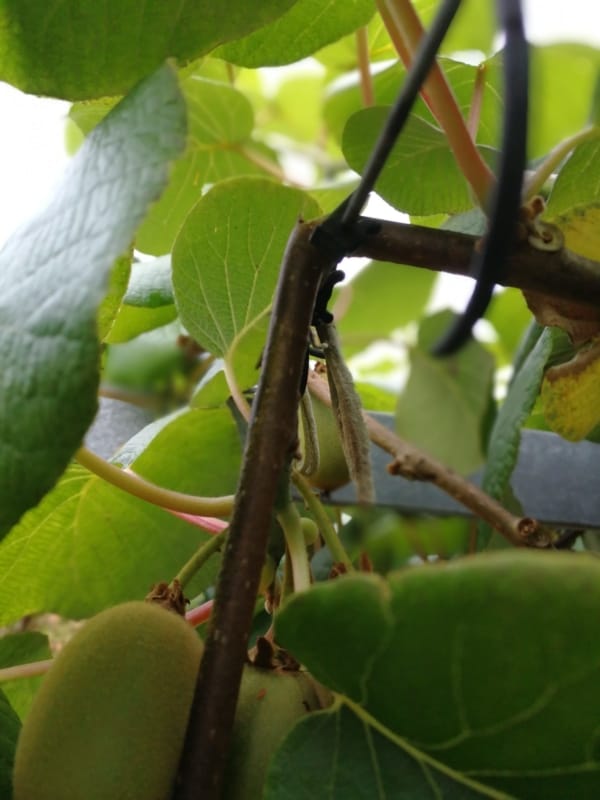
Another necessary check is to check that the male vines are not encroaching too much into the female canopy. The size of your males can be quite compact and still provide the pollen required. It is the location of the male flowers with respect to the female flowers that is important. Don’t be afraid to allow female canes to grow out towards the male. These can hang under the males during the season and produce some fabulous fruit.
Also check on the management of young vines in the orchard. They have been placed there for a reason. All too often I see money spent on planting young vines only to find that care is not taken in their management. This may be set as a separate task but whatever the case ensure care and attention is put into their training and ensure that strings, clips etc are not impacting on their overall health.
With the data gathered during this checking process, ensure that you then act. Act to finetune the pruning that is being done. You may wish to get the team to go back to those areas where too much wood has been tied in and remove the excess conversely, you may want the team to focus on certain areas of the canopy such as around the leader or out towards the males. Tying in more spur wood or flicking a short cane back towards the leader can help lift bud numbers. Also, don’t forget to reward a job when it is well done. The price growers pay for winter pruning has not lifted significantly over the years. The value that we growers get from a job well done is immense. Do ensure that the good work is rewarded. This could be done by paying a bonus for the team reaching the targets set or paying the good workers at an hourly rather than contract rate to focus their effort on a quality rather than a quick job.
From an organic perspective another important aspect of the winter prune is late tipping. While researching whether late pruning had a negative impact on the flower to winter bud ratio, scientists were surprised to find that tipping the ends of canes just prior budburst resulted in the tipped canes producing more flowers. This has become standard practice for organic growers who don’t have access to some other means of lifting this flower to winter bud ratio.
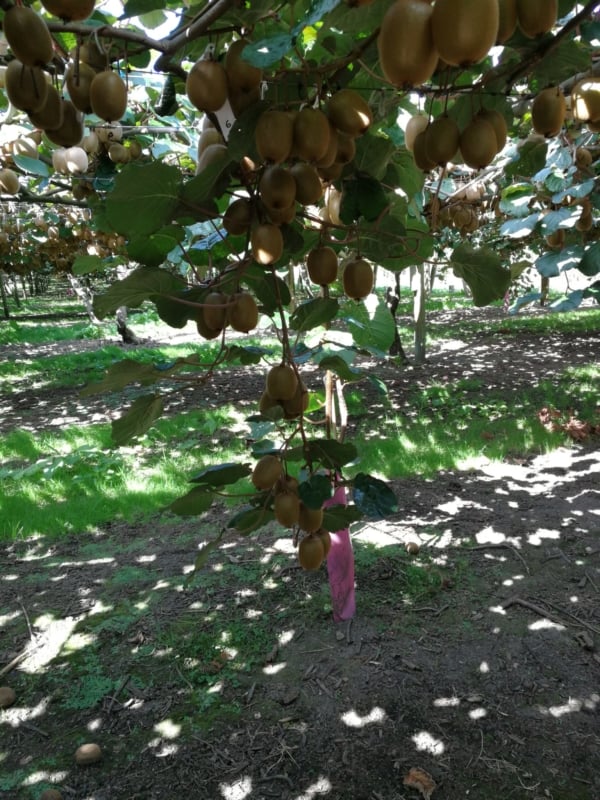
Once pruning and tying down has occurred, in order for other activities to take place it is important to get the spent cane on the ground mulched. Not only does this allow for vehicles to move through and apply fertilisers or composts and crop protection sprays, it also contributes to the building up of organic matter in the soil under the canopy. Organic matter that is invaluable in improving drainage and water holding capacity but also adding nutrients to the soil.
So, before you begin winter pruning this season consider the quality wheel for your orchard. Plan:Do:Check:Act. What is your plan? Who is going to implement the plan? How are you going to check that your plan is being implemented? And, how are you going to act in response to what is done and what the season brings you?
Figure 6 Fruit Hanging on Canes Tucked Under Male Vines